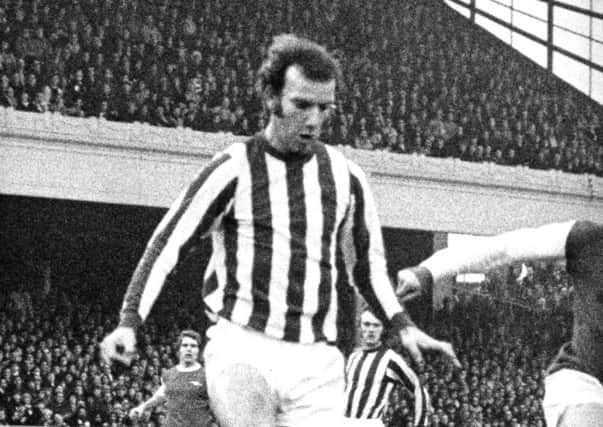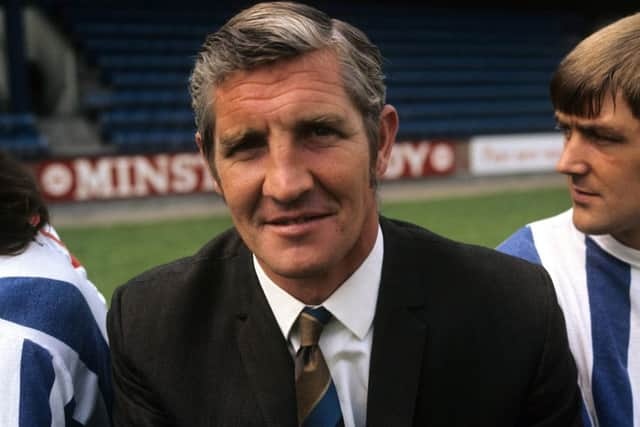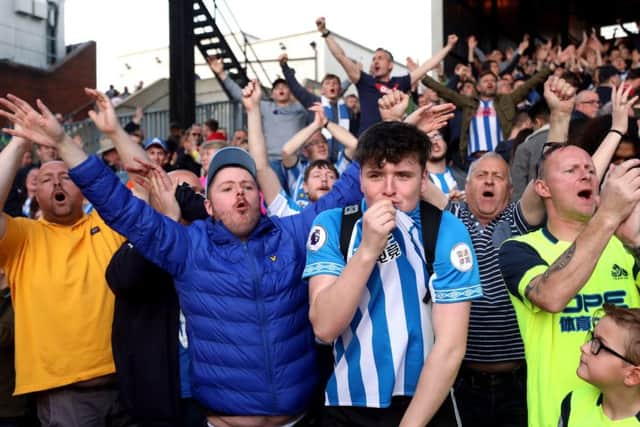Bygones – Lessons from history Huddersfield Town must heed on relegation from Premier League


Huddersfield Town will tonight return to the Championship after a two-year absence with supporters hoping there are no ill-effects to last May’s less than smooth fall from grace.
It was the fourth time the Terriers have been demoted from the senior division. The first of those came in 1952, bringing to an end 32 consecutive – and mainly successful – years in English football’s top division.


Advertisement
Hide AdAdvertisement
Hide AdThe club stayed calm in the summer that followed relegation and not a single senior player was transferred. Instead, manager Andy Beattie, newly arrived from Division Three (North) outfit Stockport County, was given modest funds for team strengthening.
His three recruits all played their part as Town stormed back to Division One with an immediate promotion alongside Sheffield United.
Inside-right Jimmy Watson, signed from Motherwell for £16,000, soon proved his worth with a regular first-team place and a Scottish international cap.
Beattie’s other signings were lower key, Ron Staniforth having never played above the third tier despite being 28, and Tommy Cavanagh, 23, being the other new faces. Both, though, were well known to Beattie, having been recruited from Stockport.


Advertisement
Hide AdAdvertisement
Hide AdLike Watson, Staniforth promptly became an automatic first-team selection and would also earn international honours in his own right, eventually winning eight England caps. As for Cavanagh, the youngster appeared 21 times in his first Leeds Road season as Town utilised a pool of just 16 players in 42 league matches.
Amazingly, all six members of Town’s defence played every game in 1952-53. Veteran Town fans can no doubt still recite those famous names of Wheeler, Staniforth and Kelly, together with those of McGarry, McEvoy and Quested.
Up front, Jimmy Glazzard missed only one game and scored 30 goals. Many of these were set up by left winger Vic Metcalfe, another ever-present who netted 15 times as Town bounce backed immediately as runners-up.
This was just the start for Beattie’s team as they finished third on their return to the top level, Glazzard and Metcalfe sharing another 40 goals.


Advertisement
Hide AdAdvertisement
Hide AdThe flipside to this impressive revival in 1952 came exactly 20 years later, when things really could not have gone any worse in the wake of Town dropping out of the old First Division.
Leeds Road supporters did enjoy how the Seventies got under way. Ian Greaves’s team, with an average age of just 23 and again using only 16 players, raced to the Division Two title by seven clear points – no mean feat back in the days before the Football League introduced three points for a win.
Greaves’s youngsters then made a decent start to life in the top division, finishing 1970-71 in 15th place. Scoring goals, however, had been a problem, with the 42 league outings yielded just 40 goals.
All Town fans anxiously awaited the recruitment of a proven goal-poacher during the following summer but no such signing arrived.


Advertisement
Hide AdAdvertisement
Hide AdFor their part, the Huddersfield board complained at the size of home crowds but this did little to appease fans, who pointed to an average gate of 24,115 and three home fixtures that lured 40,000-plus through the turnstiles.
The anxiety felt by supporters was well-placed, as that second campaign among the elite sadly proved. It was a desperate time, just 27 goals being scored as confidence drained away.
These troubles in front of goal were particularly felt at Leeds Road, where the last 11 home games yielded a paltry two goals.
After defeating Derby County, destined to be crowned champions that season, on November 27, the Terriers failed to win again. In the end, it was a tribute to the defence that, after conceding only 59 goals, just four points separated Town from safety.
Advertisement
Hide AdAdvertisement
Hide AdTo say that fans were ‘unhappy’ was an understatement. Promotion, after 14 years, had been hard-earned and well celebrated, yet the club’s biggest transfer deal in the two seasons back in the top league was an outward-bound one with the popular Jimmy ‘Chopper’ McGill sold to Hull City for £53,000. Soon after the 1971-72 season ended, the board hit back against withering criticism; detailing a contract dispute involving a delegation on behalf of the team comprising Trevor Cherry, Roy Ellam and Frank Worthington, who with Jimmy Nicholson – injured since October – were arguably the club’s best three players.
Sensational newspaper headlines announced that none of the three Yorkshire-born stars would ever play for Huddersfield Town again.
Many fans regarded this as a ‘smokescreen’, seeking to mask the directors’ own failings.
Inevitably, the three nominated players were soon on their way from Leeds Road. Cherry, team captain in Nicholson’s absence, and Ellam were quickly sold to Don Revie’s Leeds United for £100,000 and £30,000, respectively.
Advertisement
Hide AdAdvertisement
Hide AdWorthington, meanwhile, joined Leicester City for just £80,000.
Town supporters were doubly dismayed at Cherry and Ellam joining Leeds and the size of the fees, this being the same summer when Leicester full-back David Nish signed for Derby County for a massive £225,000.
David Lawson became Town’s fourth departure, the goalkeeper also staying in Division One via a move to Everton for £80,000.
In total, and including Jimmy McGill, this meant that five top players had exited Leeds Road, thereby removing the heart of the truly excellent young Town team that, just two years previously, had been runaway Second Division champions.
Advertisement
Hide AdAdvertisement
Hide AdPre-season team strengthening was now an obvious necessity but, with just £105,000 spent on Sheffield Wednesday’s Graham Pugh and Alan Gowling, of Manchester United, the directors’ response was a predictably cautious one.
With dressing room and terrace morale equally low, Town’s return season back in the Second Division was disastrous as another relegation followed.
A first campaign in the third tier awaited as Huddersfield embarked on a slump that would see Town go on to spend five seasons in Division Four, while the average crowd for 1978-79 plunged to 3,649. Thank heavens, therefore, for the brave recovery mission then launched by the amazing Mick Buxton.
So, can any conclusions be drawn from those summers of 1952 and 1972 as Town tonight return to the Championship?
Mainly that cool heads and solid summer-time transfer business is key following relegation.
‘Of Amos, ’Erbert and Friends – Flying High with Huddersfield Town,’ by Andrew Pearce.
